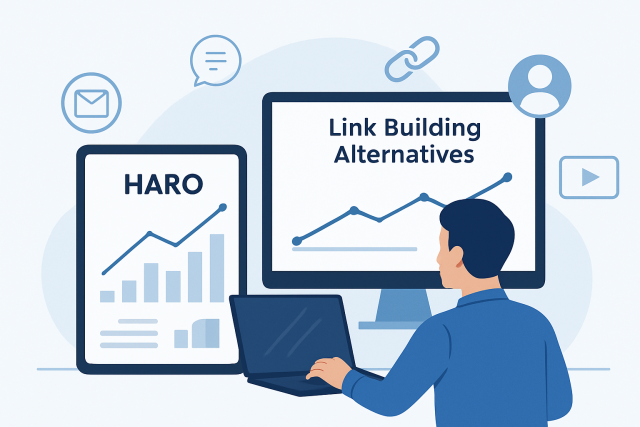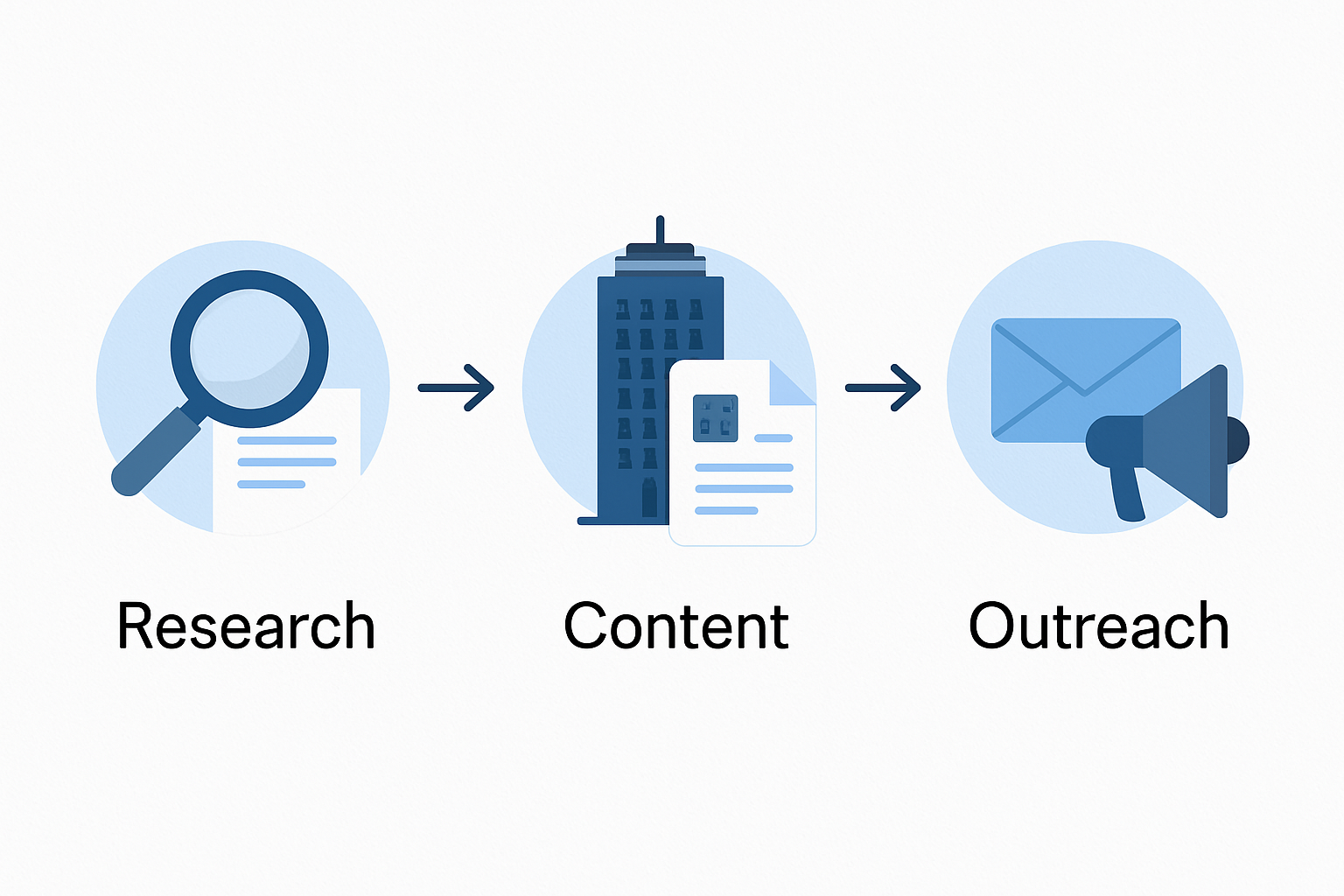
Effective HARO Alternatives for Link Building
Explore effective HARO alternatives that cater to different budgets, niches, and link building strat...

Link acquisition is a cornerstone in SEO and digital marketing and often turns the tide in boosting your website’s authority and visibility. This guide walks through practical strategies and handy tools to help you get a solid grip on this essential skill.
Link acquisition is all about snagging hyperlinks from other websites that point back to yours. This strategy plays a big role in ramping up your search engine rankings and beefing up your site’s authority while bringing in more sweet organic traffic.
When you are mapping out your link acquisition game plan, it pays to keep a few different types of links in mind. Dofollow links are the real MVPs for passing SEO juice and usually give your rankings a nice little boost. Nofollow links tell search engines not to follow them so they do not carry as much direct SEO clout. However, don’t underestimate them because they can still send traffic your way and get your brand name out there. Internal links act as friendly guides within your own site, helping visitors find their way around while spreading some authority love across pages. External links come from outside your domain altogether.
| Link Type | Description | SEO Value | Recommended Usage |
|---|---|---|---|
| Dofollow | The classic links that actually pass link equity straight to your target page | High | Definitely put your energy here when you are aiming to build authority |
| Nofollow | Links tagged with rel="nofollow" that don’t hand over link juice, but can still bring visitors | Low to medium | Great for driving traffic, though their impact on rankings is a bit more modest |
| Internal | Links connecting pages within your own website | Medium (internal flow only) | Perfect for tightening up your site’s structure and spreading authority around |
| External | Links coming from other websites pointing to yours | High (if authoritative) | Aim to get these from relevant, trustworthy sites—they really count |
| Editorial | Links naturally woven into high-quality, valuable content | Very High | The holy grail—go after these since they tend to carry the most trust and clout |
| Non-editorial | Links from directories, comments, or paid placements | Low to medium | Use with caution; steer clear of sources that might look sketchy or spammy |
Effective link acquisition really boils down to mixing a few tried-and-true basics with some of the fancier techniques. Crafting engaging content and guest posting tend to be the bread and butter, while tactics like broken link building and digital PR often provide an extra edge.
Create high-quality content that naturally pulls in links like a magnet, and pitch guest posts on reputable sites where your voice can really shine.
Reach out to resource pages in your niche to get your site listed—it's a simple but effective way to earn those valuable backlinks.
Hunt down broken links on authoritative sites and kindly suggest your own content as a fresh, relevant replacement—everyone wins.
Put the Skyscraper technique to work by taking popular content up a notch and promoting it to attract even more links than the original.
Keep an eye on HARO and respond to journalists and bloggers looking for expert insights—it's a great way to score media coverage and backlinks.
Partner up with influencers to tap into their loyal audiences and secure backlinks that pack a punch.
Leverage digital PR and press releases to stir up interest and snag editorial links that add real credibility.
Carefully study your competitors’ backlink profiles and mimic their strongest link sources—you don’t have to reinvent the wheel to get ahead.
Producing high-quality, informative content that genuinely tackles real issues or offers fresh insights usually turns out to be the secret sauce for attracting links in a natural way. When you combine this strategy with guest posts on well-regarded industry blogs, you not only get to share valuable content but also score strong backlinks that give your site’s authority and search visibility a nice little boost.
Use trusty tools like Ahrefs or Semrush to sniff out broken links on relevant websites, then reach out to the site owners with your well-matched replacement content.
This method kicks off by hunting down popular content in your niche and then whipping up a more detailed, higher-quality version. From there, you roll up your sleeves and actively promote this polished gem to the sites that linked to the original.

Illustration showing the Skyscraper Technique process from content research to outreach.
When it comes to scoring those coveted backlinks, a solid outreach plan can make all the difference. It’s not just about sending out a batch of generic emails and hoping for the best—trust me, we’ve all been there. Instead, the key lies in thoughtful approaches that actually resonate with your audience and encourage genuine connections. Let’s dive into some strategies that will not just get your foot in the door but might just leave a lasting impression too.
Crafting personalized and respectful outreach emails that tap into the recipient's interests is key for successful link building. Good outreach isn’t just about sending messages into the void. It requires detective work, clear explanations that highlight real value, and well-timed follow-ups to nurture authentic relationships.
"Tailoring your outreach and genuinely offering value appear to be the golden tickets for earning solid, lasting backlinks that actually stand the test of time." – SEO Expert Jane Doe
Leveraging robust SEO platforms and outreach software can take the sting out of link building by providing detailed backlink data and fresh opportunities to spot prospects. These tools help you keep your campaigns on track. Tools like Ahrefs, Moz Link Explorer and Semrush are great for diving deep into competitive analysis and monitoring backlinks. This usually means you’ll build links more efficiently and with better results.
Really getting a handle on how link acquisition shakes things up for your site means keeping a close watch on key SEO and traffic metrics over the long haul. Tracking referral traffic and authority scores offers a window into the true quality and value of the backlinks you have earned.
Keep a close eye on referral traffic from your backlinks to get a real feel for how users are engaging directly. Sometimes the numbers tell a story you wouldn’t expect.
Use trusty tools like Moz or Semrush to keep track of domain and page authority. This is a neat way to gauge the overall quality of your links without breaking a sweat.
Watch for any shifts in keyword rankings after you’ve snagged those links. This is where you see if your SEO is actually getting a little boost or just playing possum.
Make sure to double-check the relevance and context of each link. If it doesn’t jive with your niche, it’s probably not worth hanging around.
Bring together traffic stats and ranking data using Google Analytics and Search Console. Doing this gives you a much clearer picture, like putting together two sides of the same coin.
Getting links can be a bit of a headache, especially when you are dealing with low response rates or sketchy-quality links. There is also the dreaded risk of SEO penalties. The real secret is to focus on quality over quantity and make sure those links make sense for your content while sticking to ethical SEO practices.
"Building sustainable links really boils down to playing it straight and focusing on steady, reliable quality. Trying to cut corners usually backfires, leading to penalties that can stick around longer than you would like." – SEO Industry Veteran John Smith
Clever link building often means rolling up your sleeves and diving into strategic partnerships. It also involves spreading your content through syndication, hopping on podcasts, and tapping into social media to spark organic link growth.
Crafting a solid link acquisition plan calls for a good hard look at your niche and audience as well as the resources you’ve got in your corner. Strategies tailored to your unique goals and strengths tend to steer you toward steady and sustainable growth.
Set clear and measurable goals for link acquisition that align with your SEO strategies and business objectives—think of it as your roadmap to success.
Zero in on your target audience and the websites that move the needle for your link-building efforts.
Choose acquisition methods that fit your niche and work with the resources you have.
Craft and polish high-quality content tailored for your chosen sites and audience.
Launch thoughtfully planned outreach campaigns using best practices and the right tools to get your message across.
Keep a sharp eye on your results, analyze the data to see what’s working, and tweak your strategy to run smoother and deliver better outcomes.

Explore effective HARO alternatives that cater to different budgets, niches, and link building strat...

Unlock lucrative earnings by promoting top bank affiliate programs. This step-by-step guide shows yo...

Master web development SEO with this practical guide using Semrush. Learn to audit, optimize, and tr...

Unlock powerful PPC optimization strategies that elevate your campaigns beyond basics. Learn expert...